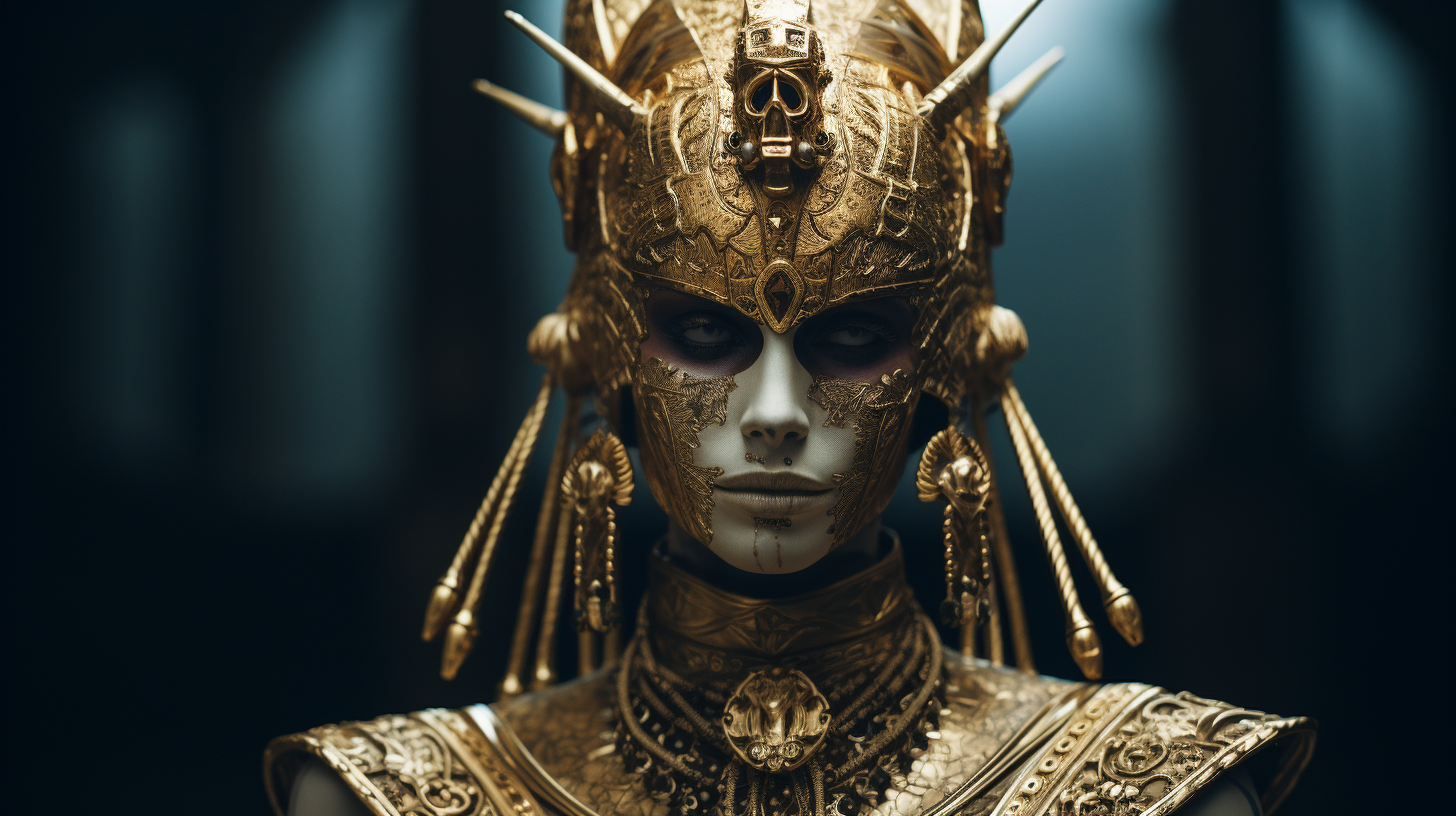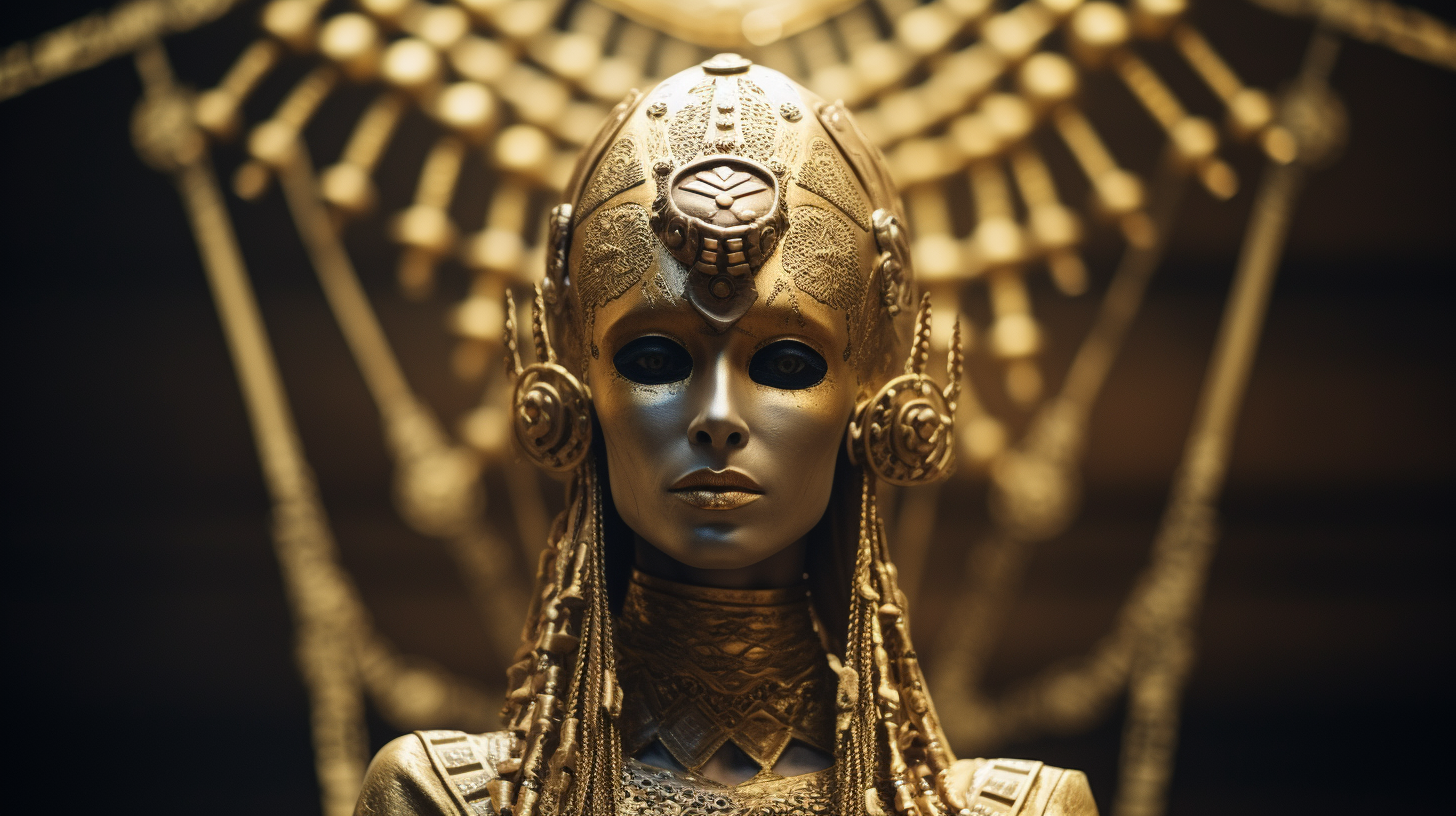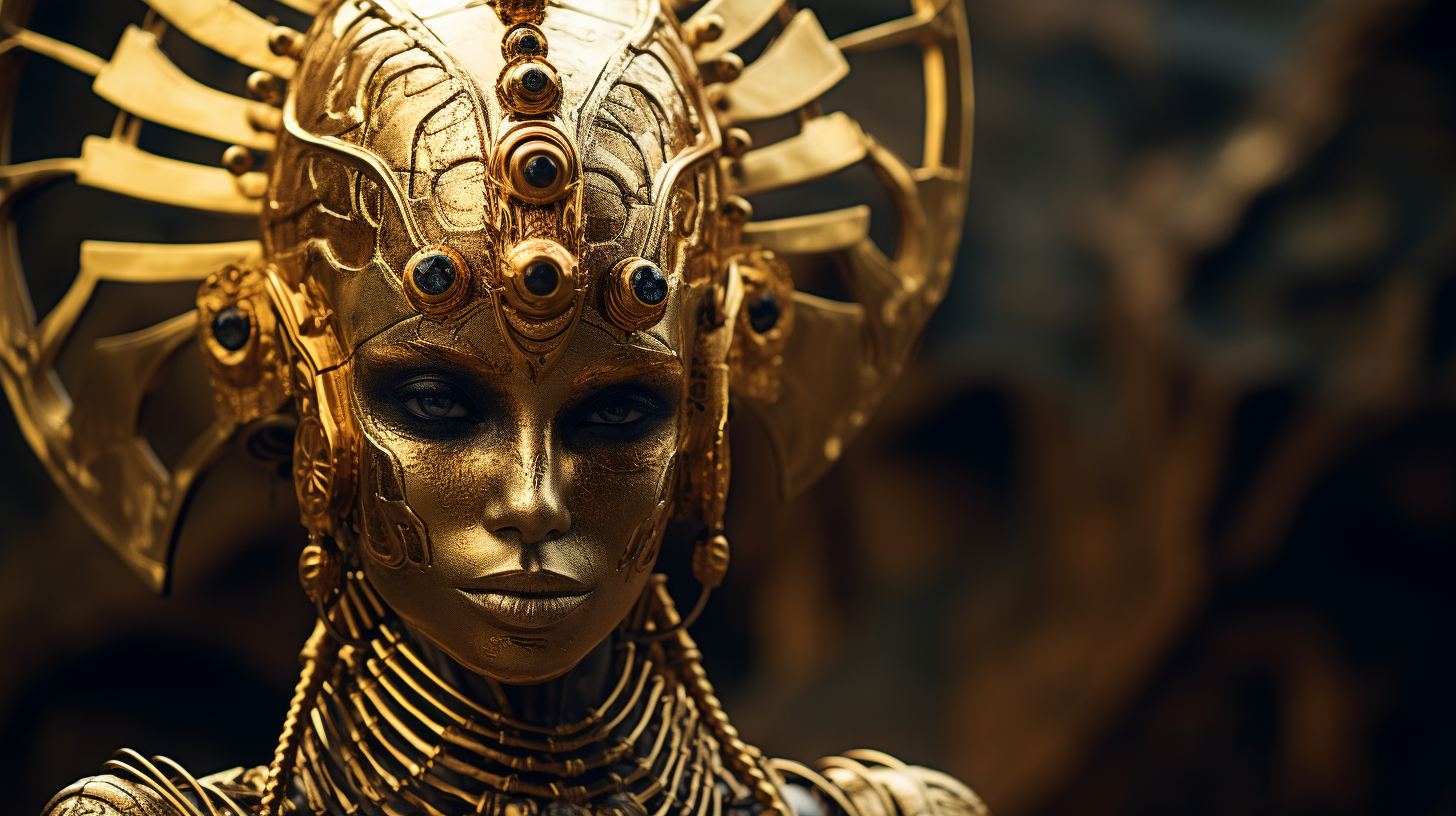It was 1927 when the arid landscapes of Southeast Iraq bore witness to an astonishing archaeological revelation within the ancient city of Ur. This momentous find ignited an insatiable curiosity among scholars and thinkers for years to come.
The remnants discovered amidst the rubble belonged to Queen Puavi, and nestled within this discovery lay a perplexing mystery – the remarkably large skull of the queen. This peculiar cranial feature bore a striking semblance to the unique skulls observed on specific Egyptian pharaohs and mummies unearthed in distant lands of Peru.
While conventional interpretations from archaeologists tried to elucidate these cranial anomalies, an unconventional cohort dubbed as ancient astronaut theorists saw deeper implications in Queen Puavi’s skull.
They didn’t merely view it as a physical oddity but interpreted it as a clue to a profound and unearthly connection. Queen Puavi’s extraordinary cranial characteristics sparked inquiries into her real essence.

Speculations hinted that she might not have been an ordinary human; rather, possibly a hybrid – a fusion of terrestrial and extraterrestrial lineage.
Efforts are ongoing to subject Queen Puavi’s skeletal remains to comprehensive genetic analysis, a scientific pursuit that could shed more light on her heritage. Initial findings suggest the presence of potential traces of Anunnaki genetic markers.
Some suggest the Anunnaki, depicted with elongated skulls, were ancient extraterrestrial beings. Could Queen Puavi be a missing link in confirming the Anunnaki’s presence on Earth or, more intriguingly, their mingling with humanity?
Queen Puavi’s historical importance surpasses her physical uniqueness. Associated with the First Dynasty, a period intertwined with the rule of the Anunnaki, she holds a significant and pivotal place in history.
Her existence could be crucial evidence of the Anunnaki’s visit to Earth and their interactions with our ancestors. It prompts contemplation about the possibility that the stories of these beings descending from celestial realms may have a basis in truth.
Furthermore, do similar stories found in ancient scripts worldwide share a common element, hinting at a shared cosmic lineage?

The concept of extraterrestrial entities descending from the heavens to engage with humanity recurs throughout history, interwoven in the fabric of diverse cultures.
Whether it’s angels, the flying serpents of Central America, or the star people of the Anasazi, these narratives share a common theme – powerful and wise beings arriving from above. The striking consistency in these stories across various cultures compels us to explore the possibility that they might originate from a shared ancient truth – that life itself could have cosmic origins.
As we navigate through the annals of history and unravel the intricate tapestry of mythology, the echoes of these stories resonate across time and space. The remarkable similarities and shared elements in these accounts push us to ask deep questions.
Is there a hidden truth behind these myths that transcends boundaries of culture and geography? Could it be that our existence is intertwined with the stars, as hinted by the ancient belief in life seeded from the cosmos?
In conclusion, Queen Puavi’s enigmatic skull beckons us to embark on a journey of exploration and contemplation. While the answers to these cosmic mysteries remain shrouded, her presence in history acts as an everlasting enigma, urging us to uncover links between diverse myths and legends and ponder the profound possibility that our origins are intertwined with the vast cosmic tapestry of the universe.
The age-old enigmas persist, and Queen Puavi’s legacy stands as a testament to the enduring quest to fathom our place in the cosmos.
